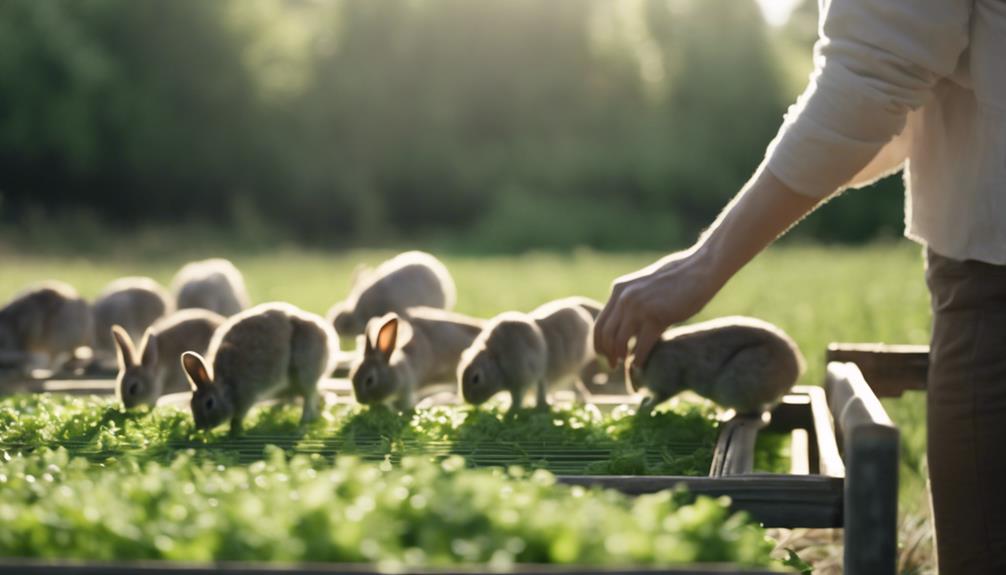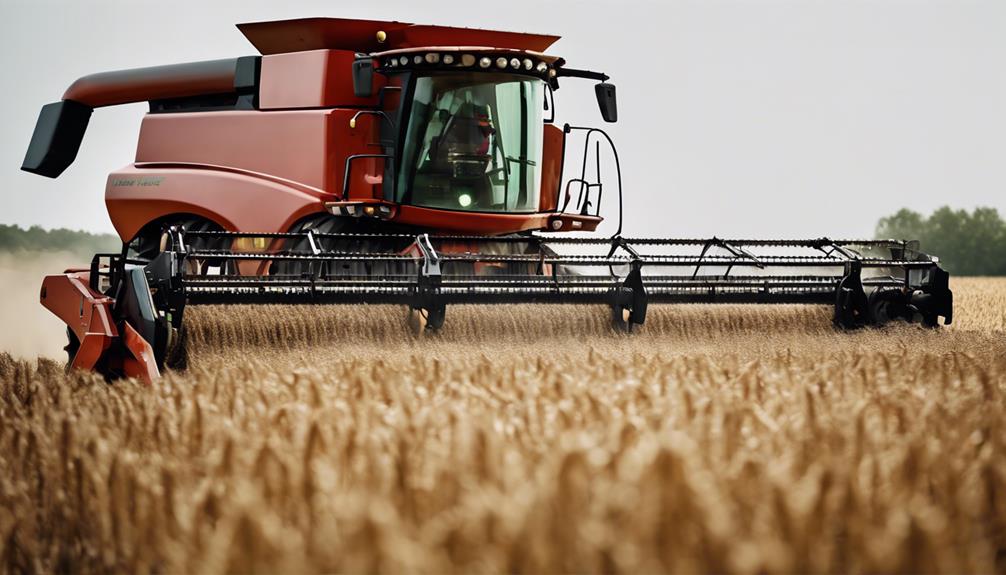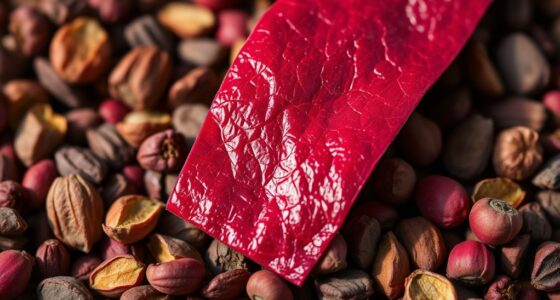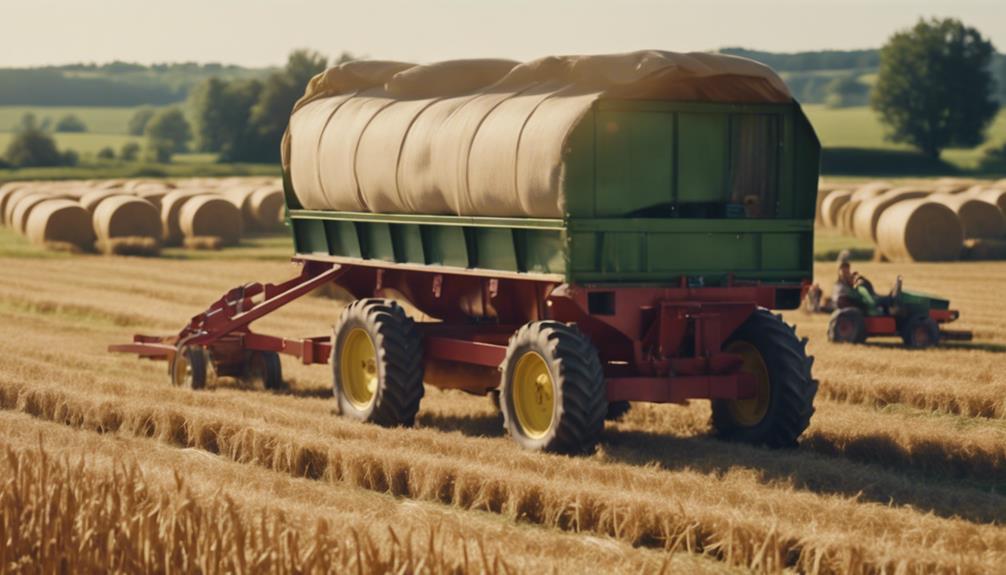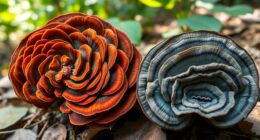To ensure your rabbits receive perfectly dried forage with maximum nutrients, hang it in a well-ventilated spot for even drying. To prevent mold and clumping, use a drying rack or hang it with string in a properly aired area. Remember, avoid direct sunlight to maintain the forage’s nutritional value. Store it in a cool, dry place like a cardboard box to prevent moisture. By following these steps, you can guarantee your rabbits are getting high-quality, nutrient-rich forage. For more information on this crucial process, check out additional insights available to enhance your understanding.
Key Takeaways
- Optimal drying is key for preserving nutrients and extending shelf life.
- Ensure proper ventilation to prevent mold and ensure even drying.
- Avoid direct sunlight to maintain essential vitamins and minerals.
- Store in a cool, dry place to prevent moisture and maintain quality.
- Follow proper techniques to retain nutritional integrity and support dietary needs.
Benefits of Drying Forage
Drying forage offers numerous benefits for rabbit owners, including preserving nutrients and extending shelf life. For rabbits, dried forage provides a cost-effective way to access essential vitamins and nutrients.
By properly drying forage, you reduce the risk of mold and spoilage, ensuring a safe and healthy diet for your furry companions. Additionally, dried forage can be less gassy for rabbits compared to fresh greens, promoting better digestion and overall well-being.
Storing dried forage allows you to have a steady supply on hand, ensuring your rabbits always have access to quality nutrition. With the nutrients preserved and shelf life extended, dried forage becomes a convenient and reliable option for meeting your rabbits' dietary needs.
Make sure to dry your forage properly to reap these benefits and keep your rabbits happy and healthy.
Selecting the Right Plants

When selecting plants for your rabbits' forage, it's important to choose non-toxic options like dandelion, plantain, and nettle. These plants are safe and beneficial for your rabbits' health.
Ideal Forage Plant Types
Choose a variety of forage plants like dandelion, plantain, nettle, and safe grasses to guarantee your rabbits receive essential nutrients and minerals for peak health when drying forage.
When selecting forage plants for your rabbits, keep in mind the following:
- Nutrient-Rich Selection: Opt for plants that are rich in essential nutrients, vitamins, and minerals to support your rabbits' overall health and well-being.
- Avoid Toxic Substances: Make sure the plants you choose are free from pesticides, chemicals, and toxic substances that could harm your rabbits when consumed.
- Consider Rabbits' Preferences: Select forage plants that aren't only nutritious but also appealing to your rabbits' taste preferences, ensuring they enjoy their forage.
Harvesting at Peak
Selecting the right plants for harvesting at peak freshness is essential to guarantee the best nutrient content in the forage for your rabbits. Harvesting at peak ensures that your rabbits receive the highest quality food packed with essential nutrients.
Choose plants that are free from pesticides, herbicides, and other chemicals to prioritize the safety and health of your furry friends. Timing is vital in harvesting forage as plants can lose nutritional value as they mature or wilt.
Opt for safe and beneficial plants like dandelion, plantain, and nettle, which are known to be rabbit-friendly for drying and storing purposes. By harvesting these plants at their peak freshness, you're providing your rabbits with a nutritious and wholesome diet.
Sun-Drying Techniques
To guarantee the best nutrient content in your sun-dried forage for rabbits, concentrate on selecting plants rich in essential nutrients like dandelions, plantains, and clover. When choosing plants for sun-drying techniques, follow these key steps:
- Nutrient-Rich Selection: Opt for plants with high nutritional value such as dandelions, plantains, and clover to make certain your rabbits receive essential nutrients.
- Chemical-Free Assurance: Prioritize plants that are free from pesticides or chemicals to ensure safe consumption by your rabbits.
- Quality Control: Ensure the plants are free from mold, mildew, or rot before sun-drying to avoid any potential health risks for your rabbits.
Harvesting at Peak Freshness

Harvest forage at its peak freshness to guarantee your rabbits receive maximum nutritional benefits. When it comes to fresh vegetables, timing is essential. Nutrients in forage start degrading as soon as they're picked. By harvesting at the right moment, you're ensuring your rabbits get the essential vitamins and minerals they need. Fresh forage is packed with nutrients that can diminish rapidly over time, so picking at peak freshness is key.
When you harvest at the right time, you're providing your rabbits with the highest nutritional value possible. This means they get the most out of the forage you offer them. Nutrient content is at its peak when the forage is fresh, and this is what your rabbits need for optimal health and well-being. So, make sure to time your harvest correctly to give your furry friends the best.
Hanging for Proper Drying
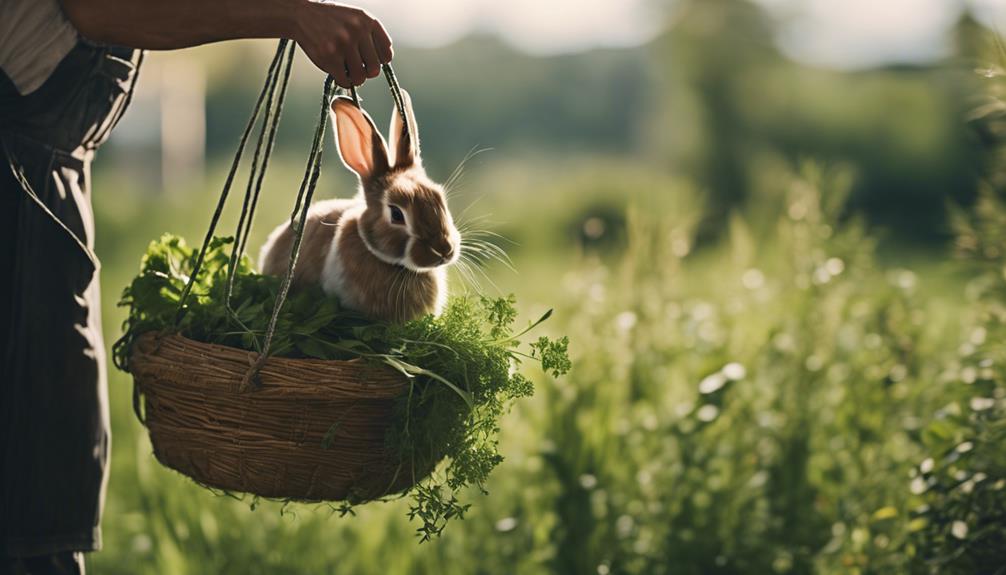
To guarantee your forage dries properly, hang it in a well-ventilated area where air can circulate freely around it. This technique helps prevent clumping and promotes even drying throughout the forage.
Proper Hanging Technique
For best drying results, make sure you hang your rabbit food in a well-ventilated area to promote even drying and prevent mold growth. To make certain you're properly hanging your forage, follow these guidelines:
- Hang the forage loosely: Allow for proper air circulation around each piece to facilitate ideal drying and prevent moisture buildup, which can lead to mold formation.
- Use a drying rack or string: Opt for a drying rack or string to hang your rabbit food in small, manageable bunches. This method allows for efficient drying and guarantees that each piece receives adequate airflow.
- Avoid overcrowding: Prevent pieces from touching each other when hanging forage to avoid hindering the drying process. Overcrowding can lead to uneven drying and potentially spoil the forage.
Benefits of Air-Drying
Air-drying your rabbit forage guarantees nutrient preservation and peak flavor retention in the leaves. By hanging your forage properly, you make sure that air circulates around the leaves, preventing mold and spoilage.
This method isn't only cost-effective but also requires minimal equipment or resources, making it an accessible option for every day. Air-drying has been a traditional and effective way to preserve forage for rabbits, allowing you to store it for longer periods without losing quality.
The benefits of air-drying extend beyond just preservation; it also helps maintain the nutritional value of the forage, ensuring that your rabbits receive the essential nutrients they need. With this method, you can be confident that your rabbits are getting the best quality forage, day after day.
Importance of Ventilation
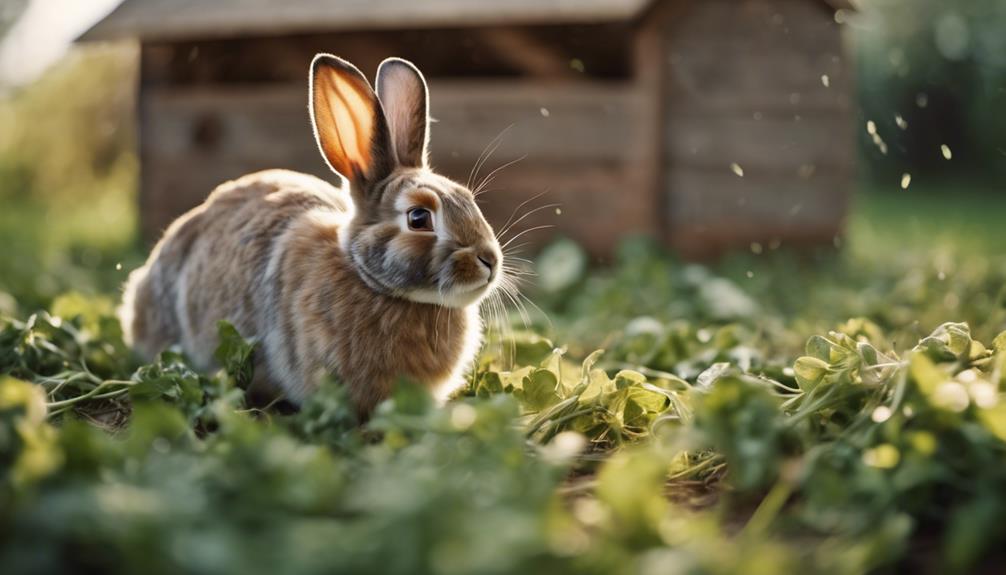
Proper ventilation plays an essential role in the effective drying of forage for your domestic rabbits. Good airflow is necessary for removing moisture from the forage, ensuring it dries evenly and thoroughly. Without adequate ventilation, the forage may not dry properly, potentially leading to spoilage and loss of nutrients.
Here are three key reasons why ventilation is important for drying forage:
- Preventing mold growth: Adequate ventilation helps reduce humidity levels, inhibiting the growth of mold on the forage.
- Enhancing nutrient retention: Proper airflow aids in maintaining the forage's nutritional quality by allowing it to dry at a favorable rate.
- Extending shelf life: By facilitating thorough drying, ventilation contributes to preserving the forage's quality, ensuring it remains fresh for longer periods.
Utilizing ventilation methods like open windows, fans, or dehumidifiers can expedite the drying process and improve the overall quality of forage for your rabbits.
Avoiding Direct Sunlight
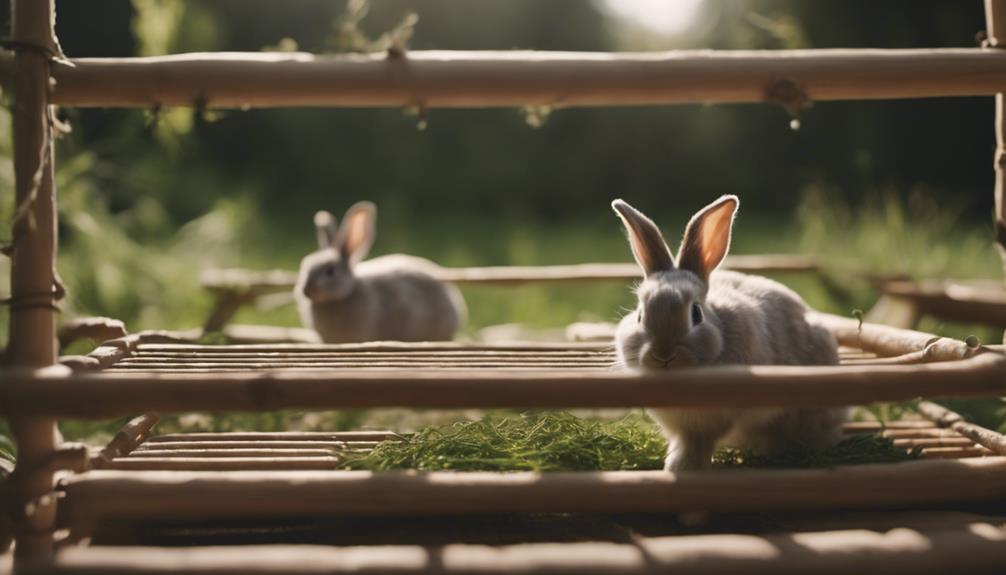
To maintain the nutritional quality of your forage for rabbits, it's essential to avoid direct sunlight during the drying process. Direct sunlight can break down essential nutrients in the forage, compromising its quality for your rabbits' diet.
Excessive exposure to sunlight may lead to the loss of vitamins and minerals, reducing the overall nutritional value of the forage. By drying the forage in shaded areas or indoors, you can prevent potential nutrient degradation and maintain the freshness of the dried forage.
Properly dried forage, shielded from direct sunlight, retains its beneficial properties for your rabbits' diet. Remember, protecting the forage from direct sunlight is key to ensuring that your rabbits receive the necessary nutrients from their diet.
Storing for Longevity
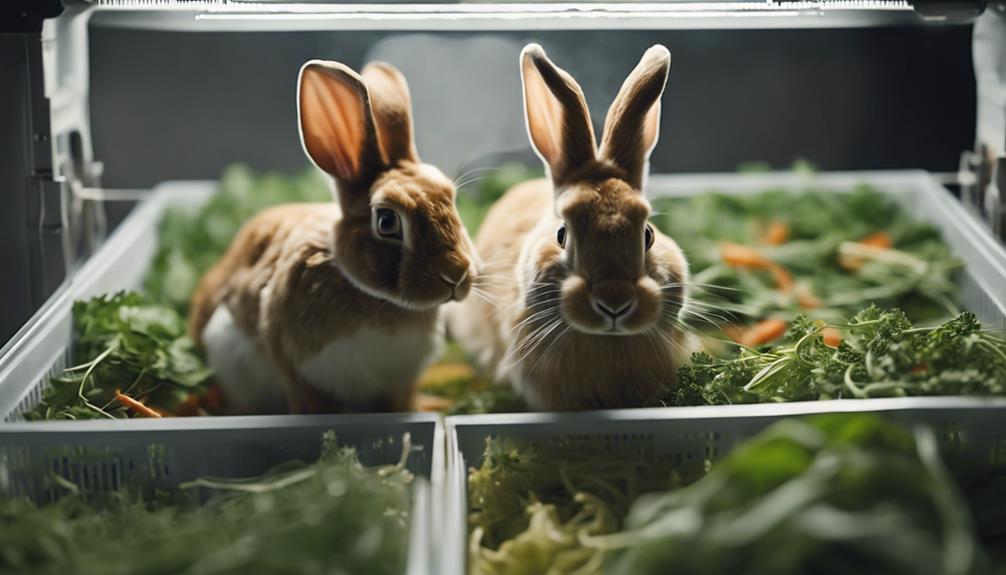
Storing dried forage in a cardboard box helps prevent moisture buildup and mold growth, ensuring longevity and freshness for your rabbits' diet. When it comes to preserving alfalfa hay or any other forage for your furry friends, proper storage is key.
Here's how to store dried forage effectively:
- Avoid Plastic Bags: Steer clear of using plastic bags for storing dried forage, as they can trap moisture and lead to spoilage. Opt for a cardboard box instead to maintain the dryness of the forage.
- Guarantee Complete Dryness: Before storing the forage, guarantee that it's completely dry. This step is essential for maintaining freshness and quality over time.
- Cool, Dry Place: Store the dried forage in a cool, dry place away from direct sunlight. This practice helps extend the shelf life of the forage and reduces the risk of contamination, ensuring the safety of your rabbits.
Maintaining Nutritional Quality
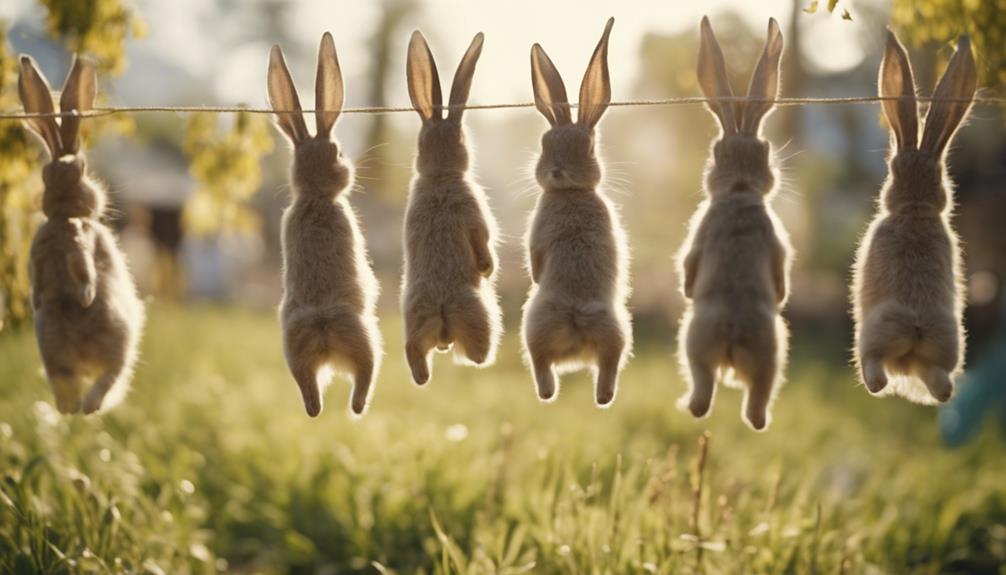
Maintaining the nutritional quality of dried forage is vital to ensuring that your rabbits receive the necessary dietary benefits for their health and well-being. When drying forage, make sure to follow proper techniques to preserve essential nutrients like vitamins and minerals.
Incorrect drying methods can lead to nutrient loss, impacting the overall quality of the forage and potentially depriving your rabbits of essential nutrients. By ensuring that the forage is dried correctly, you can maintain its nutritional integrity, providing your rabbits with a diet that supports their health and well-being.
Keep in mind that nutrient-rich forage plays an important role in meeting your rabbits' dietary requirements. Therefore, it's important to pay close attention to the drying process to retain the forage's nutritional value.
Your rabbits rely on you to provide them with high-quality forage, so make sure to prioritize maintaining its nutritional quality through proper drying techniques.
Frequently Asked Questions
How to Dry Forage for Rabbits?
To dry forage for rabbits, lay leaves outside under the sun with a plastic cover, use the oven on low heat for 15 minutes, or air dry in cupboards for 4-5 days. Utilize leftover oven heat for efficiency.
How to Dry Forage?
To dry forage, let the sun's warm embrace work its magic, or cozy up in the airing cupboard for a few days. If you're in a hurry, pop those leaves in the oven on low for 15 minutes.
How to Dry Out Flowers for Rabbits?
To dry out flowers for your rabbits, hang them upside down in a dark, well-ventilated spot. Make sure they are fully dry before storing to avoid mold. Popular choices like chamomile and lavender can make tasty treats.
How Do You Keep Rabbit Food Dry?
To keep rabbit food dry, guarantee complete dryness before storing to prevent mold. Use air, sun, or oven drying methods. Avoid plastic bags for storage. Regularly inspect for spoilage. Remember, 80% of mold growth happens due to insufficient drying.
Conclusion
Now that you have mastered the simple trick to perfectly drying forage for your rabbits, you can guarantee they've a nutritious and tasty diet all year round.
By following these steps, you can harvest, dry, and store forage effectively, maintaining its quality and freshness.
Your rabbits will thank you for the effort, and you can feel confident in providing them with the best possible nutrition.
Happy foraging!

